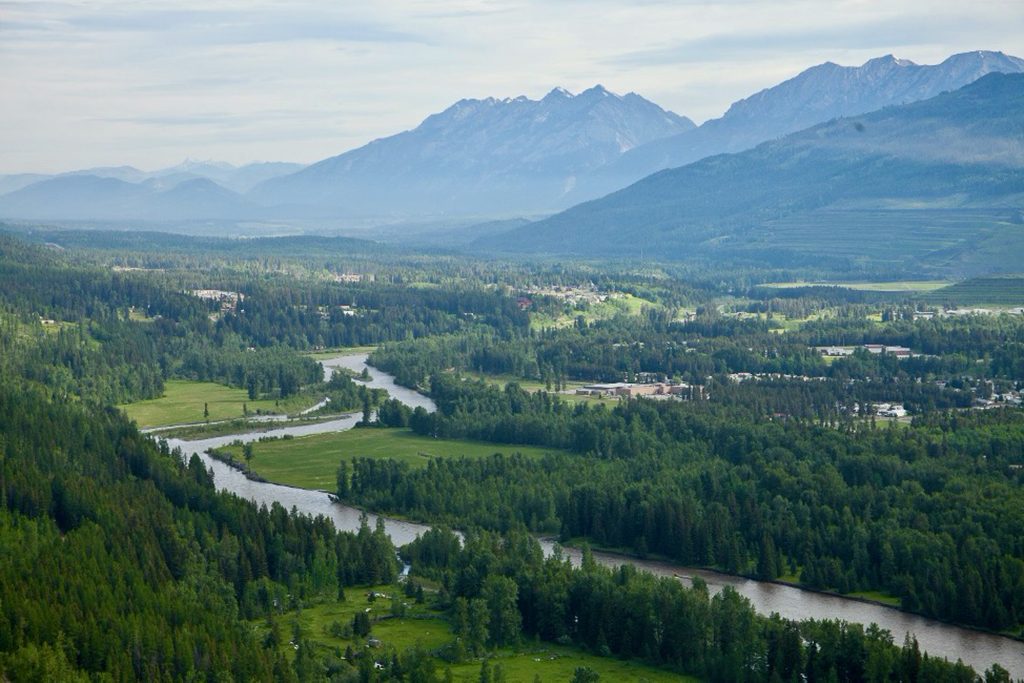Building a new stormwater treatment facility to replace a wetland that’s already providing that service doesn’t make a lot of sense. And yet, without a rigorous method to assess the value of natural assets, that’s what many communities continue to do.
The Victoria-based non-profit Municipal Natural Assets Initiative (MNAI) continues to assist communities in recognizing the value of natural infrastructure with its second annual cohort of six proposed projects, two in British Columbia.
From flood protection, to stormwater management, all of the projects (including three in New Brunswick and one in Ontario) involve water infrastructure. MNAI works with each community to study candidate projects and assess the financial impact of a more natural approach to infrastructure planning. In Courtenay, B.C., for example, a proposed approach would involve widening and naturalizing almost 1,300 metres of the banks of the Courtenay River to save an anticipated $2.4 million in damage to downstream properties during a one-in-200-year flood event. In the District of Sparwood, B.C., protecting a 150-square-metre pond will help maintain current river water quality, and save the district an estimated $200,000.
The studies aren’t designed to avoid construction work, notes Michelle Molnar, technical director at MNAI. They’re devised to ensure that communities get the best value from the construction work they undertake, by incorporating natural assets wherever appropriate.
“Generally, we don’t do a great job of managing our natural assets,” she says. “We don’t know the quantity and quality of the resource or how its contributing to infrastructure services. We’re encouraging communities to learn about and apply those basic measures.”
Each year, MNAI calls on expressions of interest from communities regarding a natural asset approach to infrastructure.
“However, we’re not just consultants,” says Molnar. “We choose communities based on their ability to build their infrastructure capacity after we leave, using our approach and the framework we’ve developed.”
The Courtenay project is part of a broader stormwater mitigation and flood management planning study. MNAI considered the cost and benefits of: widening the Courtenay River; naturalizing the foreshore of a former sawmill site to re-instate natural river flow paths; and land acquisition and remediation to gradually remove at-risk buildings from the floodplain.
For the Sparwood project, MNAI analyzed the role of a natural pond at the outlet of a stormwater culvert to improve water quality in the Elk River and compared the cost of retaining it with the estimated cost of a fully-engineered alternative over 25 years. The existing pond removes about 90 per cent of total suspended solids annually, while an enhanced pond would cost $64,000 and capture 94 per cent. A fully engineered alternative would cost $248,000 in capital and maintenance costs over the same time period.
Molnar notes that longstanding practices have worked against the acceptance of natural asset management.
“The mandate of economists is to efficiently allocate scarce resources,” she says. “When we first developed our economic system, nature wasn’t a scarce resource. If you consider nature to be limitless, it won’t show up on any balance sheet.”
Current accounting practices also work against communities who want to incorporate natural asset planning — the Public Sector Accounting Board doesn’t recognize natural assets.
“A community can’t improve a natural watershed to provide drinking water and use the improvement in that asset as collateral against a construction loan,” says Molnar. “But they can do it for an engineered water treatment plant.”
Unlike engineered assets, which depreciate in value and require ongoing maintenance budgets, natural assets tend to increase in value and require little to no maintenance. Natural assets are also often more resilient to climate change.
Molnar notes that in Courtenay, all the scenarios considered involved some degree of construction work, from building new infrastructure, to demolition, to shoreline engineering and dredging.
“They combined both construction and natural assets,” she says. “Construction companies would be kept busy.”











Have you researched the ISO 14000 family of standards to re-enforce your policies?